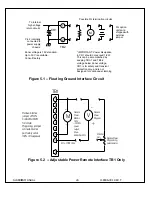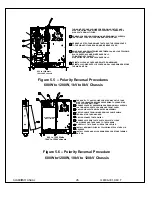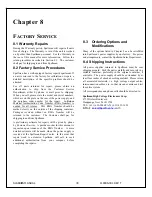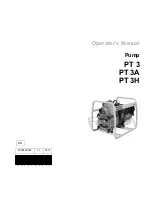
SL SERIES MANUAL
19
118006-001 REV T
ASSEMBLY TITLE
ASSEMBLY DRAWING NO.
SCHEMATIC DRAWING NO.
J5 TB1 J5 TB1
SL Chassis (10W-300W)
403919-016
403917-001
440643-003
440530-001
SL Chassis (600W-1200W)
403920-001
403918-001
440643-004
440617-001
Control / Power PWB (to 300W)
404065-005
403911-001
440570-002
440528-001
Control / Power PWB (600W-1200W)
404581-001
403935-TAB
440687-002
440538-001
High Voltage Assy (to 300W)
403930-TAB
440533-001
High Voltage Assy (600W-1200W)
403931-TAB
440534-001
Front Panel PWB
403895-001
440525-001
Table 4.1-List of Main Assemblies
In general, the following variations can be ordered:
•
100Vac
±
10%, 50 to 60Hz, single phase.
•
115Vac
±
10%, 50 to 60Hz, single phase.
•
200Vac
±
10%, 50 to 60Hz, single phase.
•
220Vac
±
10%, 50 to 60Hz, single phase.
Other input voltages can be accommodated. If the user is
unsure of which input voltage option is supplied, check
the serial tag on the rear of the power supply or consult
Spellman’s Sales Department.
Circuit protection is provided by a front panel circuit
breaker (SYSTEM BLOCK DIAGRAM CHASSIS SL
SCHEMATIC). The circuit breaker is a fast acting
magnetic trip type circuit breaker. The line input is
connected directly to the line side of the circuit breaker
whereas the load side is connected to the
CONTROL/POWER PWB. The load side of the breaker
is also connected to a step-down type line transformer.
This transformer provides voltage for housekeeping and
control circuit power.
LINE VOLTAGE IS PRESENT WHENEVER THE
POWER SUPPLY IS CONNECTED TO EXTERNAL
LINE VOLTAGES. BE SURE TO DISCONNECT
THE LINE CORD BEFORE OPENING THE UNIT.
ALLOW 5 MINUTES FOR INTERNAL
CAPACITANCE TO DISCHARGE BEFORE
REMOVING ANY COVER.
When the circuit breaker is ON, voltage is applied to an
isolated diode rectifier bridge, which contains the rectifier
diodes used for line voltage rectification. The output of
this bridge rectifier is connected to a capacitor filter.
Capacitors are initially charged through NTC type or
resistive inrush limiters.
For 150W and higher configurations, approximately 3
seconds after the circuit breaker is turned on, a relay is
energized to short the NTC or resistor limiters. This DC
voltage is supplied to the high frequency inverter.
The DC rails are connected to the high frequency rail
capacitors. These capacitors are high frequency, low loss
type, which provides the energy storage for the high
frequency inverter.
4.3 Inverter
The inverter is a series resonant, series/parallel loaded
topology. A proprietary control scheme is used for
regulating the power generated from the inverter. The
switching devices are Mosfets up to 300W, and IGBT’s
for power levels above 300W. These devices provide
high frequency switching to control the resonant current
flow. The typical resonant operating period is
approximately 10
μ
Seconds. The gate control for the
switching devices is provided by the application circuitry
located on the CONTROL/POWER PWB. The
CONTROL/POWER PWB also provides circuitry for
sensing shoot thru and overcurrent conditions in the
inverter.
WARNING
4.4 High Voltage Transformer
The output of the High Frequency Resonant Inverter is
connected to the primary of the High Voltage
Transformer. The High Voltage Transformer is a set up
type. Typical secondary voltages are in the range of 1kV
to 4.5kV depending upon the output voltage ratings.
















































